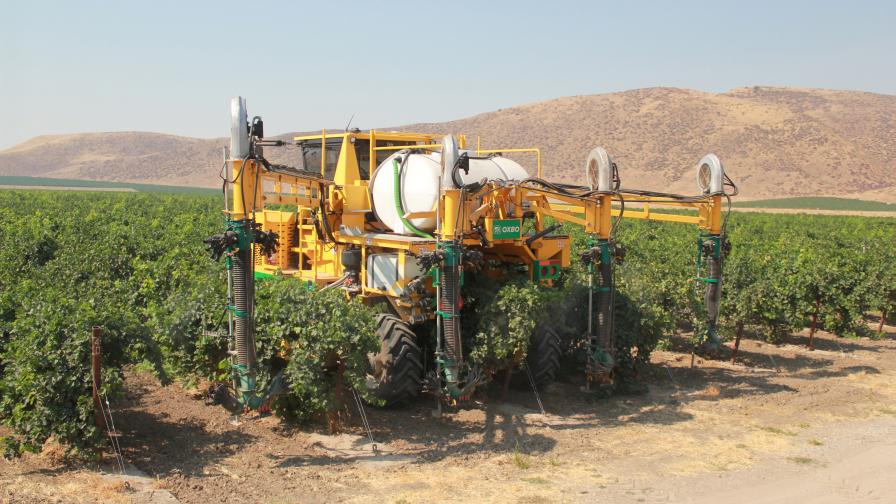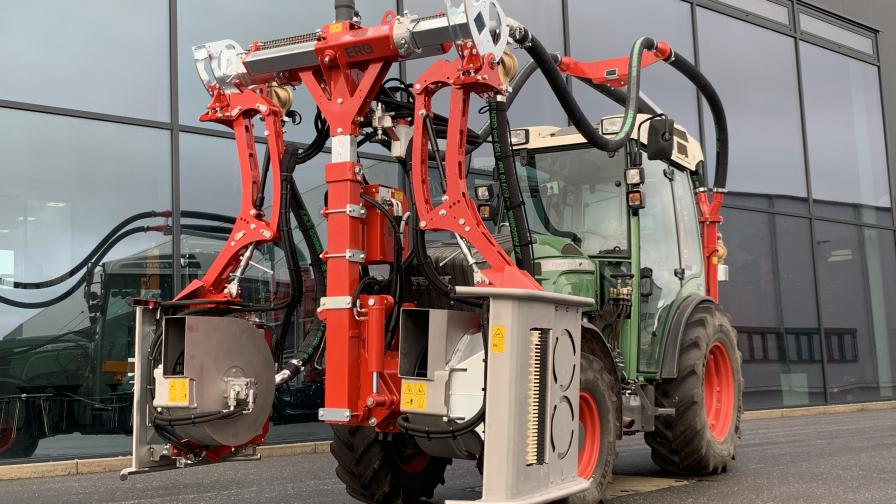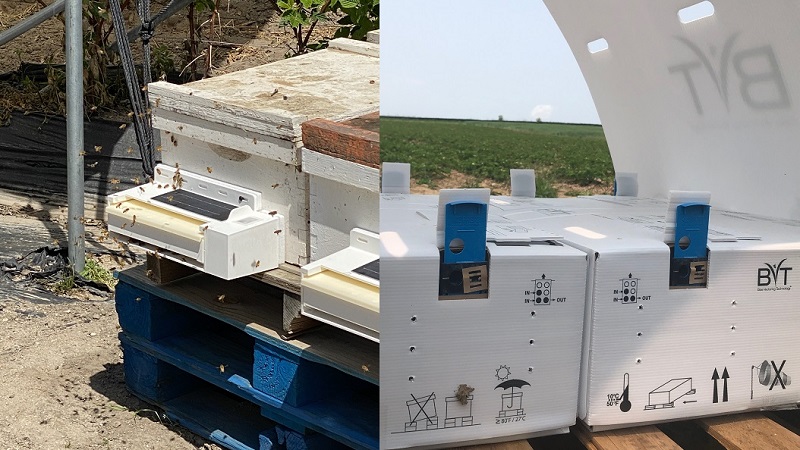Mechanical Solutions for Problems in the Vineyard

Talk about multitasking in the vineyard. This Oxbo 6030 machine harvester comes with a 640 sprayer.
Photo courtesy of Oxbo International
Labor challenges in the vineyard are varied. So are the modes of mechanization that could be used to alleviate them. For grape growers, this is the top equipment-related issue, according to Kathryn Van Weerdhuizen, the Global Market Manager of Fruit with Oxbo.
The challenge, she says, can be: the overall cost of harvesting grapes and prospect of mechanical harvesting; equipment that facilitates mechanical pruning, especially on complex trellis systems; reducing farming cost per acre; or smart equipment collecting and leveraging data across equipment in the field to make better decisions across vineyard activities.
“From our conversations with growers,” Van Weerdhuizen says, “the pressing issue is finding and implementing equipment to help bridge the gap between the supply of available, affordable labor and the demand for labor for the various tasks in the vineyard to produce high-quality fruit at a reasonable cost and to receive a sustainable price. “
Equipment is available in many cases, she says, but there are always nuances. For instance, unique spacing or trellis design can impact a grower’s ability to mechanize processes.
“As vineyard needs are varied, so is the equipment outlook. Most vineyards can be mechanically harvested today, and there are mechanical pruning and multi-row spraying solutions for many vineyards,” Van Weerdhuizen says. “The outlook for smarter vineyard equipment is varied. There is growth in yield mapping, in variable rate application, and other technologies, but adoption is varied.”
ELECTRONIC SYSTEMS
Frequently overlooked by growers is electronic equipment, says Ryan Amberg, Marketing and Business Development Manager with Felco.
“We know that gas-powered, air-powered, and manual systems are still the vast majority of what is used in the U.S. agricultural industry,” Amberg says. “However, we see with our ever-developing capabilities of electronic tools a new market emerging. With modern battery technology and the extra torque that can be achieved with brushless electronic motors, these types of battery-powered equipment will continue to speed ahead of their traditionally powered competition.”
Citing a limited labor supply, Jeremy Smith, Product Manager of Orchards and Vineyards with RDO Equipment, says nearly every manual task can be mechanically replicated, if not accomplished even better.
“Often there is debate about hand quality vs. mechanical quality and the misconception that machine results are not the same quality compared
to when the task is done by hand. The fact is that mechanical options are rapidly improving, and the results of hand quality vs. mechanical quality are now almost indistinguishable across several tasks,” Smith says.
“In my experience working with growers, this debate is quickly settled — and the results proven — with equipment demonstrations.”

RDO’s Vitipulse defoliator removes leaves and flower clusters using compressed air.
Photo courtesy of RDO
One problem is still in play: the pandemic. “COVID-19 has seen incredible impact to the logistical systems of the global marketplace,” Amberg says. “I would urge vineyard owners to acquire their equipment needs this year earlier than it is needed and to do equipment service in advance of need.
IRRIGATION/SOIL MOISTURE
Grape growers, more than other permanent crop growers, tend to overlook the value of soil moisture information, according to Todd Tucker, Chief Technology Officer with Tuctronics.
“Some use pressure bombs and sap flow information to help manage irrigation, but these methods can lead to extreme soil moisture fluctuations,” Tucker says. “By the time a plant is showing stress issues, the damage is extensive enough that it would take extreme measures to bring it back. These methods are also very expensive and labor intensive compared to real-time soil moisture data via probe. When using soil moisture information to manage irrigation, gradual adjustments can be made throughout the growing season to maintain moisture availability and control stress.”
For Semios, precision in grape growing is vital to managing water, nutrients, crop protection, and labor, Research Agronomist Johann Martinez says.
“Grape growers are under substantial pressure to be more efficient using their inputs while improving quality. When growers consider adding technology to their program, it’s often assumed that this will increase their costs, take more time out of their day, and be a pain to maintain,” he says. “However, the right information in the right hands can be a great competitive advantage.”
Meanwhile, the importance of spraying isn’t lost on grape growers, according to Willie Hartman, founder of On Target Spray Systems. “A lot of growers have told me over the years that spraying is the most important function in the vineyard, because if you mess that up, you mess everything else up,” Hartman says.
What growers should consider is the cost to operate vs. the purchase price, he adds. “For instance, let’s say you buy an airblast sprayer that costs less than an On Target sprayer. This may seem like a cost save at first, but we know from experience — and from working with growers — that the airblast sprayer is going to cost you a lot more to operate over time both in labor costs and fuel and water costs.”
ROW MANAGEMENT
Frank Niels, Manager of Sales and Marketing with Van Wamel, sees a trend to grow grass in the row instead of working the whole field. “It is recognized that a grass runway not only simplifies driving during wet periods but also the grass and humus promotes the development of soil life and, therefore, the performance of the vines,” he says.
For Grant De Vries, Sales Director with Vine Tech Equipment, finding proper equipment is equal in importance to having proficient operators and supervisors to ensure the correct use of that equipment. “Labor is getting more expensive, and it’s harder to find skilled operators,” he says. “So how do you get equipment that covers more ground and requires less input or observation from operator or supervisor? Just because you have the right piece of equipment does not mean it is being used correctly or maintained correctly.”










